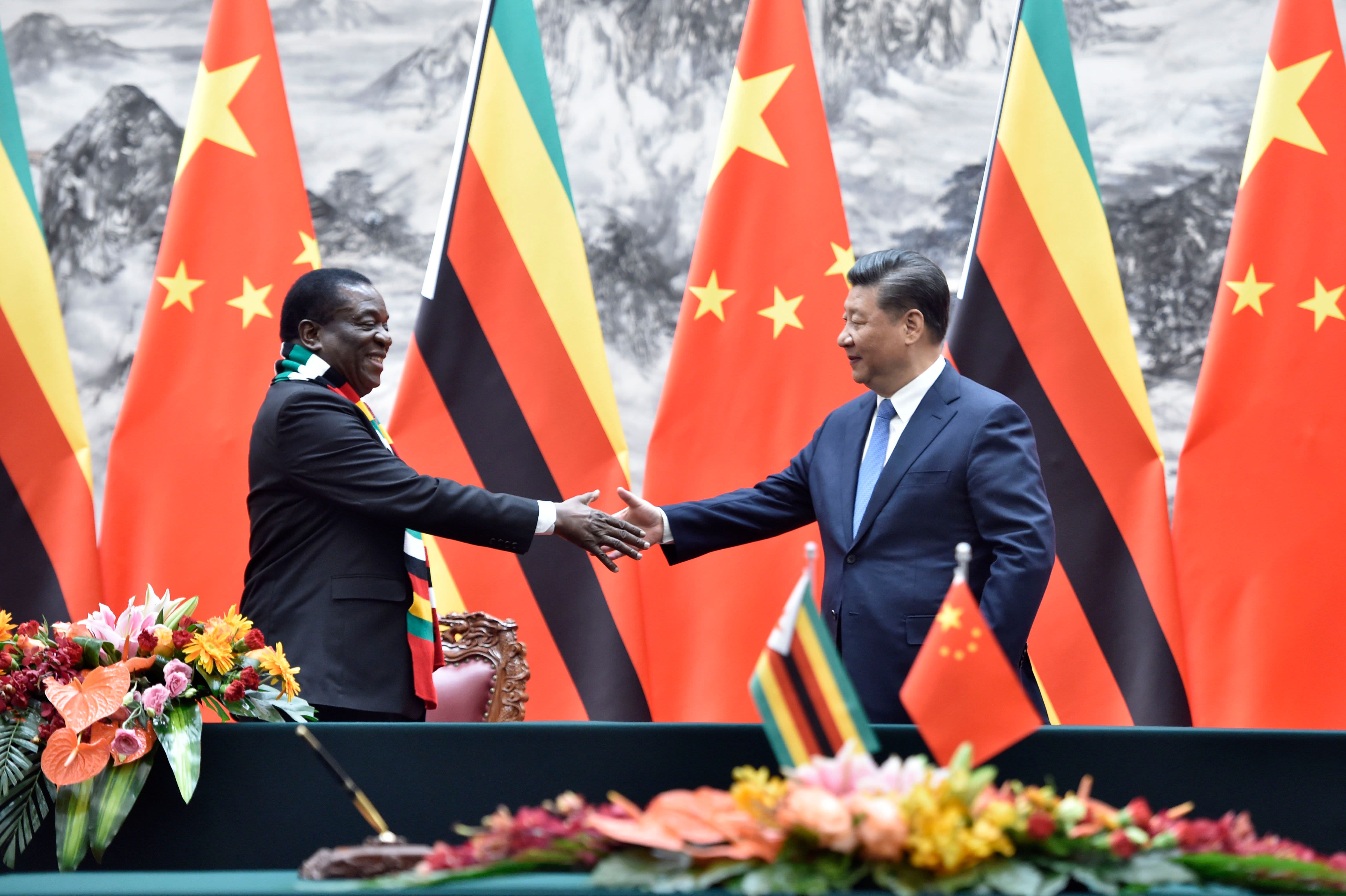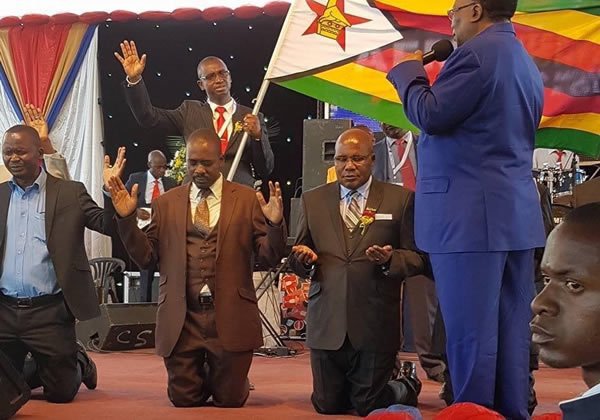The Zimbabwe Electoral Commission announced that it will roll out biometric voter registration (BVR) in preparation of the 2018 election. It is however important that we understand what BVR can and cannot do.
Taona E Mwanyisa Electoral Expert
On its own BVR is not a panacea to the problems encountered in previous elections in Zimbabwe, resulting from a defective roll but can play a role in ensuring the transparency of the electoral process. Other processes and factors should be in place in order to complement the role of BVR in elections in Zimbabwe.

Voters queue to cast their ballots during the last plebiscite.
The starting point towards any credible election is the voter registration exercise. An election that is both credible must prevent voters from voting more than once and unregistered voters from voting. The use of biometrics for automatic de-duplication, verification and authentication represents the best solution in ensuring an election with the highest integrity.
In Zimbabwe, voter registration is conducted on a continuous basis and the register is kept and maintained by the Zimbabwe Electoral Commission (Zec). It is provided for in the Electoral Act (Chapter 2:13). The Act provides for registration, transfer, objections and deletions from the voters’ roll. Currently, the system Zec employs is a paper based voter registration process and verification of data is mostly manual. This is costly as a new register has to be prepared and updated for each election. Verification of data is difficult and is open to manipulation. Deceased people remain on the voters’ register. A previous research by the Zimbabwe Election Support Network (Zesn) indicated that the voters’ roll had hundreds of deceased people, duplicated names, under aged persons and about 41% of the registered voters were no longer residing at the address in the voters’ roll. During the previous elections there were allegations of voters’ slips being used to vote whose origin could not be ascertained.
From the foregoing it is obvious that the current voter registration system in Zimbabwe is purportedly flawed and neither is it inspiring confidence in the electoral process. The system is costly and time consuming. Data captured in the field in paper form is brought to a central place for data entry and this leads to a number of errors at data entry level. It also means that duplications on the roll are many. It does not take into account issues of credibility and transparency of the process.
The discourse has now moved to how we can make the register more transparent and credible. The majority of stakeholders in Zimbabwe support the implementation of continuous voter registration using biometrics technology in order to have a voters’ register which is inclusive, comprehensive, accurate, accessible and transparent. The system that is required is one that is cost effective but also combining technology that will deal with issues of duplications and minimise errors. It has to be credible and inspire confidence in the voter registration exercise.
Now that the commission has made a commitment to use BVR, a number of processes and considerations have to be in place before it can be rolled out. In finding a new solution, priority should be accorded to enhancing the integrity of the register using biometrics technology and this technology has to be sustainable and owned by Zimbabweans. A number of issues should guide the commission in deciding on going with biometrics from a sustainability and ownership perceptive.
Financial sustainability of the system has to be considered in coming up with the desired system. Reality is that Zec does not have a continuous source of funding. Funding is ad hoc and only increases in an election year and is never sufficient. This affects operating cost of any registration system. Unlike the passport system that can generate its own funds, voter registration does not and as such would require extensive funding from the central government and cooperating partners. Resources will be required for procurement, operation and maintenance of the system. Who meets the cost? Can the cost be maintained for sustainability? BVR equipment and software are expensive and as such massive investment will be required by the commission that is reeling from under funding.
Stakeholder buy is essential in deciding the methodology as well as the technology to use during the voter registration exercise. The commission should be encouraged to involve stakeholders in the implementation of the BVR. Political parties, civil society organisations (CSOs) and other interested stakeholders should be consulted and involved in the decision on what system to go with. It should be noted that the current mistrust and lack of confidence in the current voter registration is a result of a process that was shrouded in secrecy, was not open and transparent. The commission has an opportunity to allay fears of voter registration manipulation in these early stages of deciding on whether to go with BVR or not. A platform should be put in place to ensure dialogue and constant consultation and updates during the implementation of the BVR.
Zec has to take into account capacity building. It is essential to design a system that falls within the skills set of the country. Almost all of Africa is buying skills, skills transfer is low and lost from election to election. Skills retention should be made a focus area. We have seen commissions elsewhere acquiring state of the art equipment that at times ends up idle because of lack of skills to operate and run the equipment. At every stage of the design of the system local experts should be involved, this will ensure sustainability and ownership of use of technology. At all cost, the commission should avoid a system that locks them to a vendor, source codes and other user guides should be developed and shared with local experts who will continue to maintain and update the system.
It is hoped that the use of this technology will enhance inclusiveness, transparency of the voters roll thus contributing to a credible election in Zimbabwe. BVR will give rise to a highly accurate voters’ lists base for permanent voter register, which in turn will boost confidence of the electorate in the electoral process if done in accordance with international principles and standards.
Zec and electoral stakeholders should embark on a massive awareness campaign encouraging people to register to vote and to explain how the BVR works. Planning is essential to introducing new types of technology and thorough analysis and comparative studies are critical to decision-making on the type suitable for the registration process.
What are some of the lessons we can learn from the region on how to roll out BVR?
The use of biometric technology to register voters showed its potential during the registration exercise in Zambia. Technology managed to cut down on human errors and the filling of forms prior to registration, which has reduced the time it takes to register each eligible Zambian. With a thousand mobile registration kits operating on a daily basis in each district of Zambia, the Electoral Commission of Zambia managed to register 93% of the eligible voters in the last round of BVR (2015).
Lessons from Zambia have shown us that the introduction of technology in voter registration needs to be implemented well in time before an electoral event and should be legally supported. The technology to be used should be independent from proprietorship (vendor locked). Enhanced capacity building should be undertaken for both the IT department and electoral officials. The system should be cost effective and sustainable.
The process should not be driven by vendor or external interests and it should also be home grown with sufficient buy in of national stakeholders. It should not be implemented without sufficient funds, time and capacities.
The success of the voter registration exercise in Zambia, for example, has been attributed to national ownership and commitment by the Electoral Commission of Zambia. The process was inclusive and transparent with stakeholders being consulted and informed on a regular basis. Coordinated support through the basket fund managed by the United Nations Development Programme (UNDP) also provided funding for the voter registration exercise as well as technical assistance for the roll out of the BVR. There was sufficient resource mobilisation, fund management and full support from stakeholders hence its successful roll out.
While the BVR has shown its potential elsewhere in the region the challenge for Zec is in maintaining the system and to ensure that technology is enhanced to link the Zec data base with the data base for the Registrar-General.
We should, however, be cautions with the perceived intended benefits from BVR. Alone BVR will not address the challenges facing elections in Zimbabwe. Other processes should be in place before we can have credible elections. BVR will enhance credibility of the electoral process but on its own will not be able to address the challenges Zimbabwe faces when it comes to elections. Zec should be encouraged to be open and transparent and involve stakeholders in the implementation of the BVR. This confidence building measure is required and if this is not in place elections will continue to be viewed with suspicion in Zimbabwe and allegations of vote tempering will always be there from one election to another.
Mwanyisa specialises in elections management. He has worked in a number of countries on election-related projects and he oversaw the successful implementation of the BVR process in Zambia. The views in this article are entirely his and do not represent the views of the organisation he works for or is currently advising. He can be contacted on tanyaona@gmail.com






